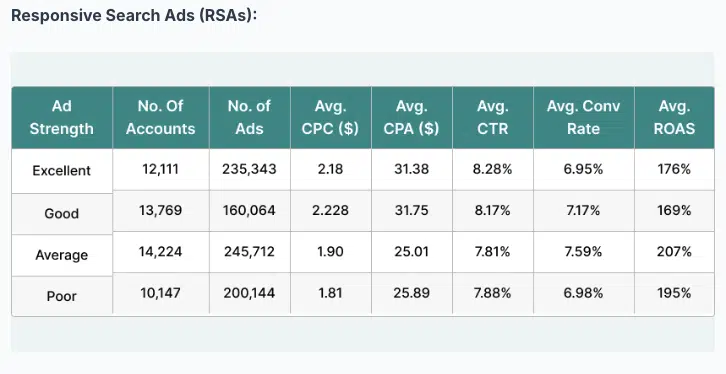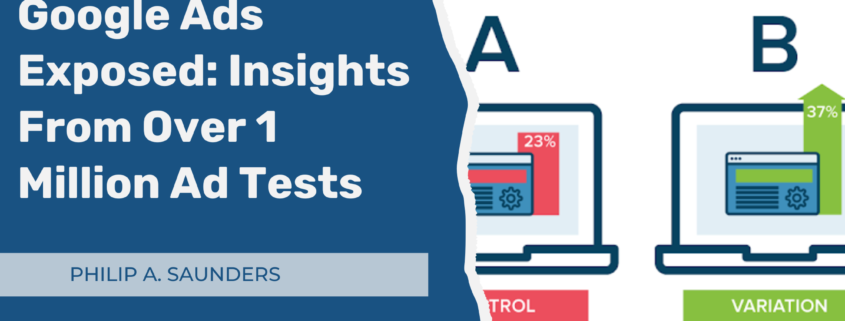Google Ads Exposed: Home Services Marketing Insights From Over 1 Million Ad Tests
Interesting article posted today over at Search Engine Land looking into common myths surrounding Ad creative and best practices on the Google Ads platform. Google Ads remains a complex battlefield where traditional strategies often do not translate into higher performance, especially for home services companies. A comprehensive study by Optmyzr, which reviewed over one million ads across diverse formats and thousands of accounts, provides crucial insights that challenge conventional wisdom in ad optimization. Here are the four main takeaways from the analysis:
How Important is Ad Strength When Looking at Ad Effectiveness?
-
- Findings: Ads marked with “average” Ad Strength frequently outperformed those with “excellent” ratings in terms of cost per acquisition (CPA), conversion rates, and return on ad spend (ROAS).
- Takeaway: Marketers should not focus excessively on achieving high Ad Strength scores. Instead, creating ads that genuinely resonate with the target audience should be the priority, as this tends to yield better results.
- Personal Experience: Surprisingly I’ve seen “poor” ad strength ads outperform “excellent” ads on CTR and conversion metrics for long periods of time. The ads were considered poor after making major changes to the corresponding landing page. I really, really wanted to pause the “poor” ads but continued outperformance stopped me from doing so. I felt better once I created and tested new versions of “excellent” rated ads that eventually outperformed the “poor” ones.

Is Pinning Worthwhile?
-
- Finding: While some level of asset pinning is beneficial—improving CPA and ROAS—fully pinned ads only showed slightly better click-through rates (CTR).
- Takeaway: Moderation is key with pinning. It’s advisable to allow some degree of flexibility for Google’s algorithms to optimize asset placement, which can lead to more efficient ad performance overall.
- Personal Experience: I found pinning one key headline works fairly well on responsive ads. I generally test pinning one headline vs pinning none as a common ad test.
Title Case or Sentence Case?
-
- Finding: Contrary to long-standing preferences for title case, sentence case formatting in ads actually led to better performance metrics, including higher ROAS and lower CPA.
- Takeaway: Advertisers should consider experimenting with sentence case, especially if existing strategies are underperforming, as it may enhance ad engagement and effectiveness.
- My Thoughts: Totally surprised by this one, never really considered sentence case in my ads. Will definitely implement and report back.
Length Matters?
-
- Finding: Shorter headlines were more effective, whereas longer descriptions did not significantly improve ad performance.
- Takeaway: The focus should be on crafting clear and compelling messages rather than filling the maximum allowable character count. Quality content is more critical than quantity in current ad environments.
- My Thoughts: Always test shorter, more impactful descriptions and resist the urge to fill up space with less impactful words.
These insights underscore the importance of evolving ad strategies based on data-driven insights rather than clinging to outdated practices. By embracing these newer approaches, home service companies can better navigate the intricacies of Google Ads to maximize their campaign results heading into 2025…
Similar Posts:
- HVAC Marketing Insights: Google Local Service Ads Lead Volume Down 30% in September 2024
- The Truth Behind the Google Search Partners Ad Network: What Home Services Companies Need to Know About Click Fraud and Brand Safety
- Lessons from the Legal Sector: Maximize Home Services ROI with a Balanced Approach
Mr. Saunders serves as Mesa’s Vice President of Marketing, bringing with him a wealth of experience in strategic marketing and operations. In this role, Mr. Saunders is responsible for overseeing all marketing activities, utilizing a blend of traditional and digital strategies to enhance brand presence and profitability, managing a multi-million dollar marketing budget across various media platforms, and leading the continued implementation of CRM systems to streamline customer engagement and drive business growth.




Leave a Reply
Want to join the discussion?Feel free to contribute!